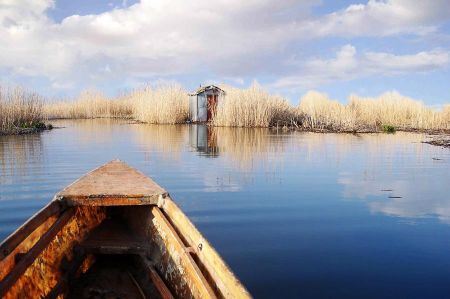Eber Gölü - swampland and bird paradise again
- Written by Portal Editor
Coming from Akşehir Lake on the D300 towards Afyonkarahisar, we also make a short stop at Eber Lake, which was once, due to the huge amounts of meltwater from the mountain range of Emir Dağları in the north and the mountain range of Sultan Dağları in the south, connected with the Akşehir Lake.
Eber and Akşehir Gölü used to form one large lake. After the sources of the lake became less and less productive, Lake Akşehir separated from Lake Eber. Lake Eber drains water into Lake Akşehir through a canal, so both lakes are still connected. The drying up of some springs in the lake and the huge amounts of water used for irrigation separated the two lakes, which are now just connected by a canal.
During the last great ice age in the Pleistocene, a huge caldera had formed at an altitude of 967 meters above sea level, which had gradually been filled up by meltwater from the surrounding mountains and by springs and streams. Huge amounts of water are fed into the lake, especially through the Akarçay stream. A large, deep body was thus able to be formed by the water. Today, Eber Lake covers an area of 125 square kilometers, making it the 12th largest lake in Turkey.
Planet wide withdrawl of water at Eber Lake too
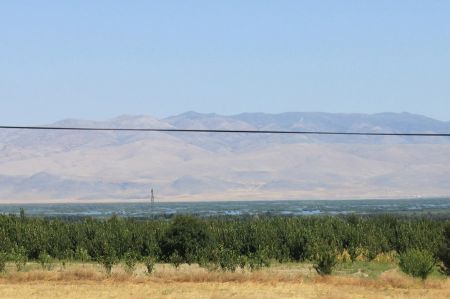 Due to global warming with less precipitation and thus lower amounts of condensation water and the continuous withdrawal of water for irrigation of agricultural land, the lake shrank more and more. When measurements in October 1991 determined that the area of the lake was only 62 square kilometers, it was decided to act and regulators were built to make the water discharge controllable. As a result, Lake Aksehir was no longer constantly filled with water from Lake Eber, which also led to regulatory measures here.
Due to global warming with less precipitation and thus lower amounts of condensation water and the continuous withdrawal of water for irrigation of agricultural land, the lake shrank more and more. When measurements in October 1991 determined that the area of the lake was only 62 square kilometers, it was decided to act and regulators were built to make the water discharge controllable. As a result, Lake Aksehir was no longer constantly filled with water from Lake Eber, which also led to regulatory measures here.
These measures were quickly crowned with success and the lake grew again. In 1969 it was even able to expand to its largest extent to date of 164.5 square kilometers at a water depth of 21 meters, which created huge swamp landscapes in the shore areas, which were used by birds as resting and resting places and by a large number of different aquatic plants.
Industrial plants destroy nature at Eber Lake
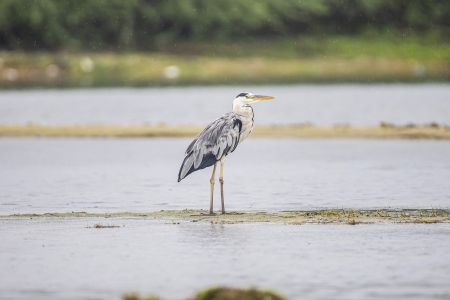 Unfortunately, the settlement of industrial plants and the rapid growth of the city of Afyonkarahisar led to severe pollution of this natural landscape, because the sewage from the city and the industrial plants was discharged untreated into the lake. A paper mill located there, which means work for more then 1,000 employees, but also produced huge amounts of waste water, did the rest. Unfortunately, the rural population saw the lake simply as a disposal area for their garbage. Almost shrunk to a large cesspool, the depth of the lake had dropped to 1.70 meters.
Unfortunately, the settlement of industrial plants and the rapid growth of the city of Afyonkarahisar led to severe pollution of this natural landscape, because the sewage from the city and the industrial plants was discharged untreated into the lake. A paper mill located there, which means work for more then 1,000 employees, but also produced huge amounts of waste water, did the rest. Unfortunately, the rural population saw the lake simply as a disposal area for their garbage. Almost shrunk to a large cesspool, the depth of the lake had dropped to 1.70 meters.
Fortunately, the pressure from environmental and nature conservationists then caused a rethinking process that led to the construction of sewage treatment plants and waste water filters. Today, the Turkish Ministry of Culture and Nature ensures that Lake Eber is slowly developing into a nature reserve, which was officially declared as such on June 22, 1992.
Today there are hundreds of so-called floating islands on the lake, which are made of reeds and are called "Kopak" by the locals and provide habitat for birds and insects. The reason for this is the detachment of the growing roots of the reed from the bottom of the lake, which then float up and connect with other roots. Slowly left to rot on the surface, colonized by dust and plants, floating islands are formed, some of which are so large and stable that fishermen and hunters can build small huts on them as accommodation.
Water snakes, waterfowl, turtles are new inhabitants
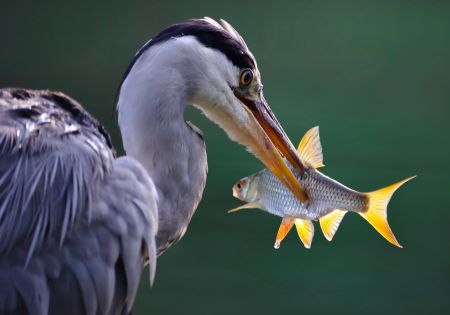 Today, the Eber See is the habitat of a large number of water snakes, freshwater fish, waterfowl, turtles and other animal species. The fishermen use the waters to hunt for carp, mirror carp, pike and gudgeon. Ornithologists who have been able to rediscover the lake as a bird paradise will find pygmy cormorants, spoonbills, Dalmatian pelican, bittern, heron, moor duck, common tern, coot, coot, white-headed duck, avocet, ringed plover and glossy ibis. The birds in particular like to use the floating islands "Kopak" to lay their eggs and rear their brood, with the reeds, which are up to 6 meters high, providing the best protection and cover. Again, the nature lover will find large areas of broadleaf bulrush, common reed, shore wattlefoot and water mint, which also contribute significantly to the purification of the lake.
Today, the Eber See is the habitat of a large number of water snakes, freshwater fish, waterfowl, turtles and other animal species. The fishermen use the waters to hunt for carp, mirror carp, pike and gudgeon. Ornithologists who have been able to rediscover the lake as a bird paradise will find pygmy cormorants, spoonbills, Dalmatian pelican, bittern, heron, moor duck, common tern, coot, coot, white-headed duck, avocet, ringed plover and glossy ibis. The birds in particular like to use the floating islands "Kopak" to lay their eggs and rear their brood, with the reeds, which are up to 6 meters high, providing the best protection and cover. Again, the nature lover will find large areas of broadleaf bulrush, common reed, shore wattlefoot and water mint, which also contribute significantly to the purification of the lake.
A large number of people living near the lake in this area, which is called Central Anatolian Bolvadin, use the fertile shore regions to grow grain and vegetables, which are offered for sale on the markets and thus contribute to the livelihood. Whether the name of the lake actually comes from the once nomadic Turkmen, who called their accommodations Eber (nomad tent), is still disputed.
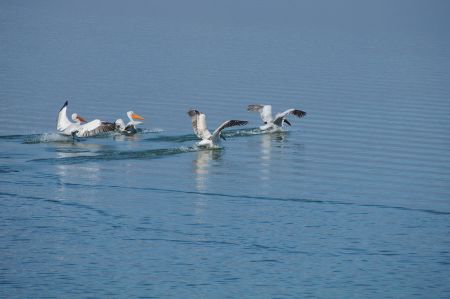 Due to the increasingly warmer climate and the withdrawal of water from the tributaries, the surface of the lake is constantly shrinking. As a result, Lake Akşehir is no longer supplied with enough water, so it gradually retreats from Lake Eber. The reservoirs built around the Eber Lake and the water pumps used to irrigate the agricultural areas have contributed to the fact that the surface and underground water sources have almost dried up. In order to counteract the complete drying up of the springs, engineers have initiated appropriate projects.
Due to the increasingly warmer climate and the withdrawal of water from the tributaries, the surface of the lake is constantly shrinking. As a result, Lake Akşehir is no longer supplied with enough water, so it gradually retreats from Lake Eber. The reservoirs built around the Eber Lake and the water pumps used to irrigate the agricultural areas have contributed to the fact that the surface and underground water sources have almost dried up. In order to counteract the complete drying up of the springs, engineers have initiated appropriate projects.
Please read as well:
